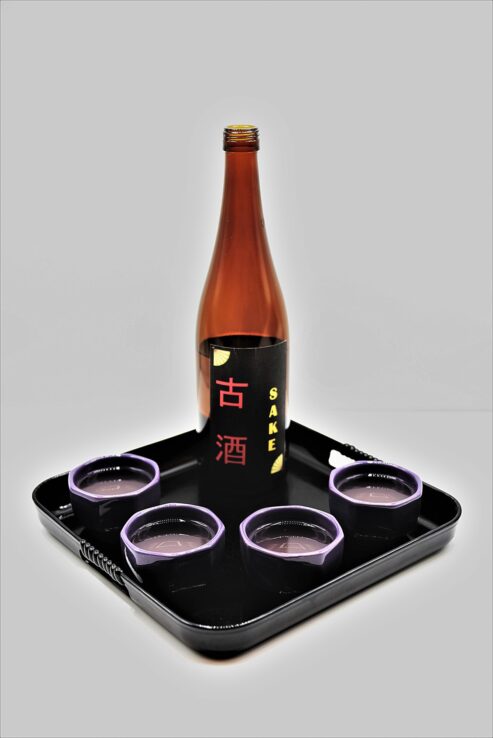WSET Level 1 Sake: The Basics of Sake Production and Tasting
Even though only 2.5% of restaurants offer sake on their menu, it’s still a highly beloved drink by its consumers. People who know to order this traditional Japanese drink have high expectations.
Perhaps you’re interested in joining sake professionals to produce and share this beverage’s delicious flavor profile. If so, you’ve come to just the right article to learn more.
We’ll cover the basics of what modern sake education looks like. In particular, we’ll detail the WSET Level 1 Sake program that’s ideal for beginners in this industry. Keep reading to see how you can become a Level One sake connoisseur.
Sake Education and Production
Sake is a complex beverage with a rich history and culture. For those who appreciate and enjoy it, sake education is key to understanding its nuances.
Anyone who wishes to gain a deeper appreciation of this beverage should know a few things very well. Understanding the basics of the production process is key for potential sake professionals. This includes the role of rice, water, yeast, and koji in the brewing process.
Knowledge of the different types of sake and their characteristics is also vital. This enables one to choose and enjoy sake that suits their tastes and preferences.
Also, sake education can also enhance the enjoyment of sake itself. It does so by providing insights into the various factors that influence its quality, flavor, and aroma.
For example, consider learning about the effects of rice polishing, yeast strains, and brewing techniques. These can help one to appreciate the unique characteristics of different types of sake.
Finally, education like WSET Level 1 Sake helps with promoting the appreciation and consumption of the beverage globally. You’ll educate people about the nuances of sake, its cultural significance, and how to enjoy it properly.
As a result, sake professionals can help to create a more informed and engaged community of sake lovers around the world. This, in turn, can help to support the sake industry and promote its future growth.
Considering the Different Styles
Sake is a versatile beverage that comes in a wide variety of styles and grades. Each has its unique characteristics and flavor profiles. The sake tasting training of WSET Level 1 Sake can help you navigate these with ease.
The most common styles of sake production include Junmai, Honjozo, Ginjo, and Daiginjo. Junmai is a pure rice sake that contains no added alcohol or sugar. Honjozo is a sake with a small amount of alcohol added to it.
Ginjo and Daiginjo are premium sakes. These are made from rice that has been polished to a high degree, resulting in a delicate and fruity sake experience.
Sake production is graded based on its quality, with higher grades being more refined and complex in flavor. The grades range from “Junmai-shu” (the lowest grade) to “Daiginjo-shu” (the highest grade).
The grading system takes into account various factors. These include the rice polishing ratio, the degree of milling, and alcohol content.
The rice polishing ratio refers to the amount of the outer layer of the rice grain that’s removed during the milling process. The more the rice is polished, the more delicate and refined the flavor of the resulting sake experience will be.
Sakes with a rice polishing ratio of 50% or lower are considered premium sakes. Those with a ratio of 70% or higher are considered standard sakes. For more specific guidance about these varieties, browse through these sake resources.
Sake Tasting
Sake tasting is an art that requires practice and a keen sense of observation. The first step in sake tasting is to examine the appearance of the beverage.
The color, clarity, and viscosity of the sake can provide clues to its quality and style. Next, it’s important to assess the aroma of the sake, taking note of any fruity, floral, or earthy notes.
Finally, the taste and mouthfeel of the sake matter, too. Pay attention to its sweetness, acidity, and umami flavors, as well as its texture and aftertaste. Your Level One sake education program will cover sake tasting training in more depth.
Assessing the aroma, flavor, and mouthfeel of sake requires a well-trained sense of smell and taste. Swirling the sake in the glass and taking a deep sniff can help you evaluate the aroma. Flavor can be assessed by taking a small sip and holding it in the mouth.
Evaluate the mouthfeel by paying attention to the texture of the sake. This involves its thickness or creaminess, as well as its aftertaste. With these practices, you’ll master your sake tasting training in no time.
Serving Like Sake Professionals
Sake can be served at a range of temperatures, from chilled to warm. Different temperatures can bring out different flavors and aromas in the sake.
For example, chilled sake can enhance the sweetness and fruitiness of the sake. Warm sake can bring out more savory and earthy notes. The choice of glassware is also worth noting, as the shape and size of the glass can affect the overall presentation.
Sake is a versatile beverage that can pair well with a wide range of foods. Some common pairings include sushi, sashimi, grilled meats, and vegetables. The umami flavor of sake can complement the flavors of seafood and meat, while the acidity can cut through rich and fatty dishes.
Industry and Culture
Sake plays a significant role in Japanese culture and history. Sake is often used in religious ceremonies, and its production has been considered an art form. Sake is also a common drink during social occasions, such as weddings and business meetings.
In recent years, there has been a decline in domestic consumption of sake. This has led to increased efforts to promote sake exports and increase international awareness of the beverage. Worldwide, there has been a growing interest in sake that has helped boost the industry.
Getting a WSET Level 1 Sake Award
You’re excited to join the ranks of other sake professionals around the world. That’s why you’re ready to start with the WSET Level 1 Sake program. This sake education and certification is just what you need.
Fortunately, we’re here to help you connect with that education. Learn more about how our online course is ideal for you to start your career in the wide world of Japanese sake.


